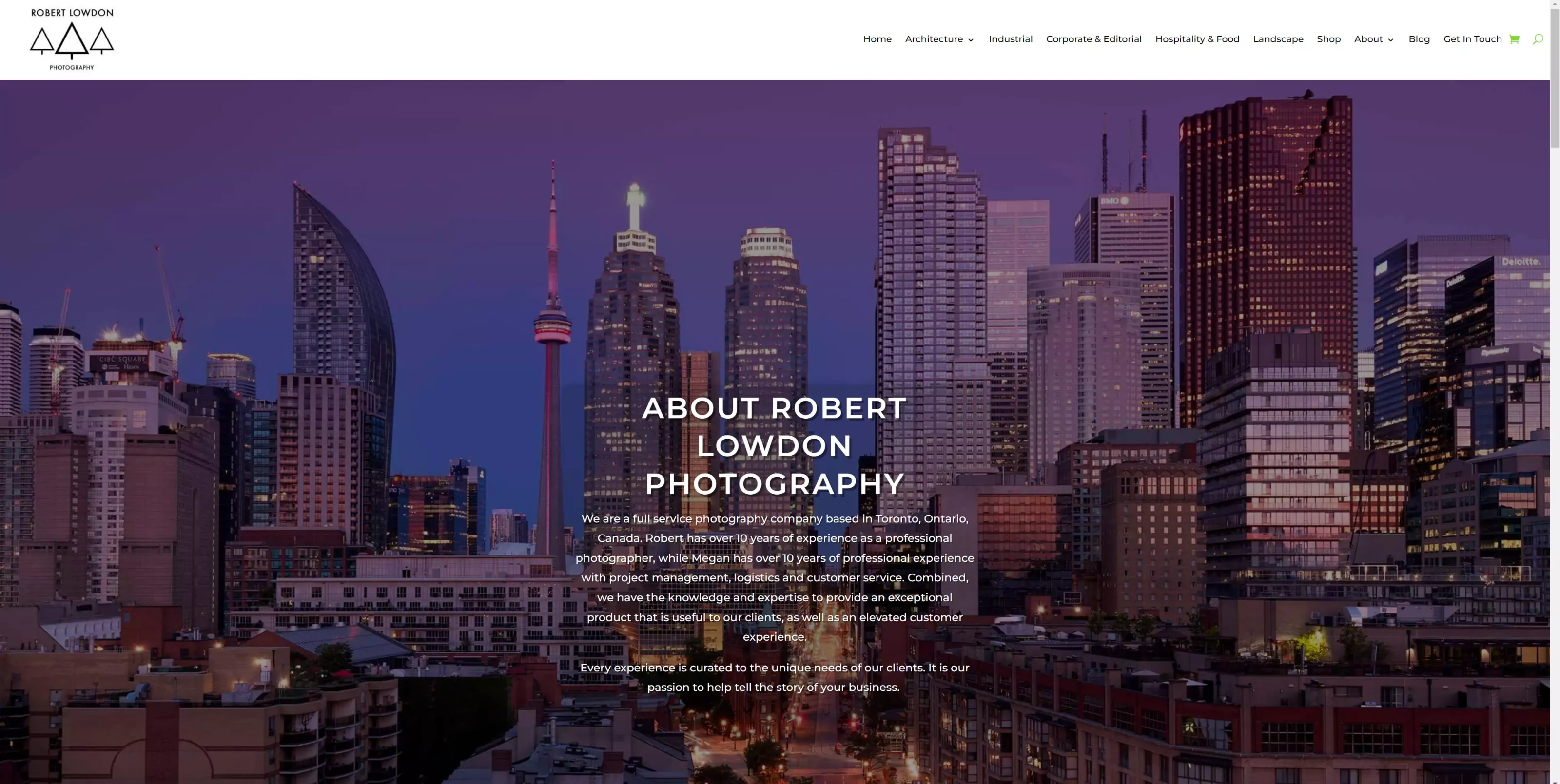Are you having trouble choosing the right images for your business website?
You’re not alone. It can be tricky to select the right pics that will represent your brand well and capture attention.
In this post, we’ll give you some tips for choosing the best images for your website.
Why is Important to Include Images on a Website?
When designing a website, visuals are key. Research has shown that users are more likely to engage with websites that include images, and that those images can help to convey important information more effectively than text alone. In addition, pictures can help to break up long blocks of text, making a website more visually appealing and easier to navigate.
When used wisely, images can also help to improve search engine optimization, making it more likely that users will find your site when they are looking for information on the web. In short, including images on your website is essential for creating an effective and user-friendly site.
Images Add Visual Appeal to a Website
Images help to break up text, making it easier to read and digest information, while also providing visual appeal to draw in and entice potential clientele. Rather than bombarding your website’s visitors with information overload, pique their interest with photos and give them a reason to hit that contact button.
Make it easier to navigate your website by using high end commercial images to distinguish between sections/ topics.
Images Help to Tell a Better Story
Images tell a story in and of themselves. Allow the business’s products and services to speak for themselves through the use of dynamic images on your website.
Photography can provide a visual narrative of WHO YOU ARE, WHAT YOU DO, and demonstrate the BENEFITS of using your products and/ or services. Photos offer a quick and efficient means of identifying your products and services, allowing the consumer to hone in on what they are after in a matter of seconds.

Images Build Trust
The images you use on your website will have an impact on the way customers perceive your business in terms of trustworthiness. It is not enough to simply include ANY photographs on your company’s website. You should be careful and deliberate in your choice of images.
The goal should be to include images that relate to a business, products and/or services, and speak to the quality of your work and the care you put into all aspects of your business.
Images for a website that entice website visitors, demonstrate the benefits of your product, and elicit trust in your business, will ultimately provide you with the opportunity for increased sales.

Types of Images for a Business Website
Images are an important part of any website. They help to break up the text, add visual interest, and showcase what your business is all about. But not all images are created equal.
There are several different types of images that you can use on your website, and each has its own benefits.
So, which type of image should you choose for your business?

Home Page Images
The way a home page looks can be just as important as the way it reads. The images on a home page are one of the first things that a reader will see, so it’s important to choose pictures that are both visually appealing and relevant to the site’s content. In general, home pages should feature bright, cheery images that make viewers want to stay on the site and explore further.
A good mix of photos, illustrations, and infographics can help to break up text and keep readers engaged. Additionally, it’s important to make sure that all images are high-quality and properly sized for the page. By paying attention to the images on their home page, site owners can ensure that their visitors have a positive experience from the very first click.

About Page Images
The place to show potential customers who you are, what you do, and why they should choose your products and services. What sets you apart from your competitors? How can these images for a business website tell that story?
Include headshots of the people that make up your company. Give potential customers an opportunity to connect with your business on a personal level by showing them who you are and giving them a sense of your business’s core values. A professional headshot can also elicit trust in your business.
Add interest to your employee portraits by using backdrops and props that relate to your business and show customers what it is that you do. We have all seen the generic headshot with a simple solid color backdrop. While this is common, it is not always preferable.
For instance, a headshot of a musician standing in front of a simple white backdrop is bland and does not reflect the creativity of the artist. Whereas, an image of the musician holding a guitar gives you more information and is enticing to the viewer. With the right setting, staging, and framing of shots, headshots can be impactful and evoke emotion.

Include location shots, such as architectural images, interiors, or cityscape, to allow customers to get a glimpse of where you work. Ensure that the images demonstrate an understanding of composition, and that there is no distortion of architectural features.
This is of particular importance when demonstrating the work of an architectural firm, construction company or realtor, as it will bring into question the quality of your work if the walls do not appear straight in the images.

Services Page Images
Include images of employees doing their jobs. Photos of your team should be vibrant and engaging.
Include images of customers smiling to convey that they are happy with your products and/or services. Choose images that best reflect the type of work you do, and the atmosphere or the workplace.

Projects Page Images
Include photos of your products, projects, and or completed work. An image that demonstrates a product in use allows people to visualize how they might use the product. As they say, “the devil is in the detail.”
Images of products, projects, and completed work need to be clear and crisp, well lit, and skillfully composed, in order to provide people with the information they need to understand what it is that you do. You want to leverage the website pictures you have, to see the benefits that your products and services offer.

Product Page Images
The images on a product page can have a significant impact on a customer’s decision to make a purchase. In general, customers are more likely to purchase an item if they can see it in detail.
This means that product pages should ideally include multiple images of the item, including close-ups and views from different angles. In addition, captions or text descriptions of the images can be helpful in highlighting key features of the product.
Finally, it is important to use high-quality images that accurately represent the item for sale. Blurry or low-resolution images can give the impression that the product is of poor quality, which is likely to dissuade potential customers from making a purchase.

Blog Images
Whether you’re a fashion blogger, a foodie, or a travel enthusiast, images are an essential part of your blog. Great photos can help to engage readers and make your posts more visually appealing. However, there are a few things to keep in mind when selecting images for your blog.
First, try to avoid using stock photos whenever possible. Readers will appreciate seeing real photos that you’ve taken yourself. Second, be sure to choose high-quality images that are well-lit and properly composed.
Blurry or dark photos will detract from your blog’s overall aesthetic. Finally, don’t forget to include alt text for each image. This will help readers with visual impairments understand what the image is depicting. With these tips in mind, you can select images that will complement your blog and engagingly communicate your message.
Where Do You Find Images for A Website?
One of the most important aspects of creating a website is finding images to use. You want to find images that are high quality and will help represent your brand in the best way possible.
But where do you find these images?
There are a few different places to look, and each has its own benefits and drawbacks. Here’s a look at some of the best options for finding images for your website.
Depending on your budget and needs, you may choose between hiring a photographer, purchasing stock images for a business website, or a combination of the two.
There are many hard to find professional photos in which stock photos will suffice. However, choosing a photographer provides a more personalized and authentic experience.
Hire a Photographer
A business photographer can help your creative vision come to life. You will want to choose carefully. Ensure that the photographer listens to your ideas, understands your expectations, and is able to deliver new business images you like. Viewing their portfolio of work will give you a sense of what they are capable of and whether their style suits your needs.
Go for for original photos when possible, to set yourself apart from your competitors, and to avoid using the exact same photos as other companies. Beware of generic stock photos that don’t really tell visitors to your website WHAT YOU DO and WHO YOU ARE.
Buy Stock Images For Your Website
If you’re running a website, it’s important to make sure that the images you’re using are high quality and professional. One way to ensure this is to purchase stock photography from a reputable source. There are many benefits to doing this, including having a wide selection of images to choose from and being able to use the images for commercial purposes.
Stock photos can be a great way to add visual interest to your website and make it more appealing to visitors. When choosing stock, be sure to select ones that are relevant to your topic and that will fit well with the overall look and feel of your site. With a little bit of research, you can find the perfect stock photos for your website.
Popular stock photo sites include:
Getty Images
Getty Images is one of the world’s largest stock photography agencies. It was founded in 1995 by Mark Getty and Jonathan Klein. The company has over 80 million images in its collection, making it one of the largest stock photography repositories in the world.
Getty Images also owns a number of other companies, including iStockphoto, an online stock photography service. In addition to stock photos, Getty Images also offers editorial images, video, and music.
The company has over 4,000 employees in 40 countries. Getty Images has been profitable every year since 2002. In 2012, the company had revenue of $3.3 billion.
Shutterstock
Shutterstock is a leading global provider of high-quality licensed photos, vectors, illustrations, videos and music. Founded in 2003 by entrepreneur and photographer Jon Oringer, Shutterstock has customers in more than 150 countries and employs over 1,700 people worldwide.
In addition to photos, vector illustrations and videos, Shutterstock also offers a growing selection of music tracks for use in video production.
Adobe Stock
Adobe Stock is a website that provides users with access to millions of royalty-free images, videos, and illustrations. With a subscription, users can download an unlimited number of assets for use in their creative projects. Adobe Stock also offers discounts on certain image packs and collections. In addition, Adobe Stock provides customers with the option to purchase credits, which can be used to download images, videos, and illustrations on an as-needed basis.
Dreamstime
Dreamstime is a stock photography website that offers royalty-free photos, illustrations, and videos. Founded in 2000, Dreamstime has a library of over 200 million images and videos. Customers can purchase images and videos for use in both personal and commercial projects.
In addition to individual purchases, Dreamstime also offers subscription plans for businesses. Subscribers have access to an expanded library of images and videos, as well as additional features such as password-protected galleries and customer support.
iStock
iStock is a stock photography company headquartered in Calgary, Alberta, Canada. The company was founded in 2000 by Bruce Livingstone, and it offers both royalty-free and rights-managed images. iStock was acquired by Getty Images in 2006 for $50 million. As of 2015, iStock had a library of over 9 million royalty-free stock photos, illustrations, and videos.
The company’s slogan is “The web’s original source for royalty-free stock photos.” In addition to offering photos, iStock also provides audio clips, video clips, and vector illustrations. The company has a pay-as-you-go pricing model, which allows customers to purchase credits that can be used to download assets.
iStock also offers monthly and yearly subscription plans. Customers can search for assets using keywords or browse through the company’s categories, which include animals, architecture, business, food & drink, nature, people, and travel.
Stocksy
Stocksy is a stock photography company that was founded in 2013. The company is based in Victoria, British Columbia, Canada. Stocksy’s mission is to provide high-quality, royalty-free photos to creatives around the world.
The company offers both subscription and pay-per-image plans. Stocksy has a team of over 50 staff and photographers spread out across 10 countries.
Crestock
Crestock is a royalty-free stock photo agency. They offer high quality, professional photos at affordable prices. With over 20,000 images in their collection, Crestock is sure to have the perfect image for your project. In addition to traditional stock photos, Crestock also offers vector illustrations, video footage, and audio clips.
There are of course many other stock photo agencies. What is your favorite? Let me know in the comments
Stock Photography Copyright & Usage
Keep in mind that images found online have different licenses and terms of use. It is your responsibility to familiarize yourself with the terms, restrictions, and conditions of use. For instance, images in the Public Domain, meaning that the intellectual property rights have expired, do not require permission from the photographer for use.
There are various Creative Commons licenses, some of which allow for images to be used freely so long as credit is given to the photographer and others which prohibit commercial use or adaptation of images. Once purchased, images with Royalty-Free licenses can be used as many times as you like, whereas Rights-Managed images require payment per use (or beyond predetermined number of uses).
Hiring a Photographer vs. Buying Stock Photography
When it comes to marketing your business, product, or service, high-quality photos are essential. These days, there are two main options for acquiring the photos you need: hiring a professional photographer or purchasing stock photography. Each approach has its own advantages and disadvantages.
Hiring a photographer is generally more expensive than buying stock photos, but it also offers a higher degree of control over the finished product.
With stock photography, you’re limited to choosing from existing images, but you can often find exactly what you’re looking for at a relatively low price. Ultimately, the best approach depends on your specific needs and budget.
If you’re looking for unique, one-of-a-kind photos, hiring a photographer is probably your best bet. However, if cost is a major concern, stock photography may be the way to go.

Are Website Images Important?
In 2019, commerce was responsible for around $3.5 trillion in sales and is expected to hit $4.9 trillion by 2021. So this begs the question: How are we presenting our products and services to potential customers?
Photography is an investment that can increase sales, increase customer engagement, and present your company in a professional manner. How many of us have looked online for a business only to see badly taken photographs with a cell phone. Did it hurt our perception of that business?
Customers, judge our brands by the photography they see. We need to present the best images we can. It’s too important not too.
Great photographs tell the world that you are open for business. They inspire customers to purchase our products. They let the world know who our company is, and what we do. Presenting your product and/or service in a professional manner is essential now more than ever.
Whether you are a large national corporation or a small local business, customers will want to connect with you, to understand your values, which is why it is important to demonstrate who you are and what you stand for in your website’s photographs. Professional, well-crafted photographs inspire confidence in your business, and your products/ services.
What Image Formats Should You Use on Your Website?
When it comes to choosing the right image format for your website, there are a few factors to consider. The first is compatibility. Not all web browsers can display all image formats, so you’ll need to use a format that is compatible with the web browsers your visitors are using.
The second factor is file size. Smaller image files will load faster, which is important for providing a good user experience. The last factor is quality. You want your images to look sharp and clear, without any artifacts or distortion.
There are several popular image formats used on the web, including JPEG, PNG, and GIF. However, the newer format of WebP is gaining popularity due to its smaller file sizes and compatibility with the latest web browsers. Overall, WebP is a good choice for most websites. It can provide high quality images while still loading quickly.
Conclusion
Images are a powerful way to engage website visitors and can be used to improve conversion rates. However, it’s important to choose the right images for your business website. In this post, we’ve outlined some tips for choosing the best images for your website.
I hope you find these tips helpful and that they help you create an engaging website that converts visitors into customers. Are there any other tips you would add? Let us know in the comments below! Don’t forget to sign up for our newsletter so you can stay up-to-date on all of our latest blog posts.








0 Comments